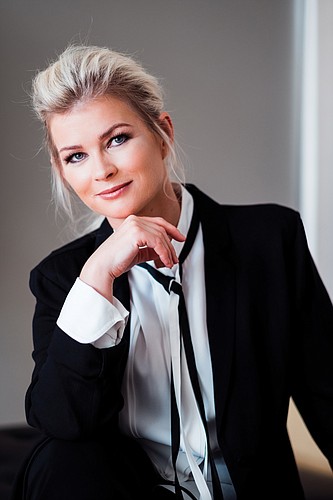- January 14, 2025
-
-
Loading

Loading

The Sarasota Orchestra’s opening concert of its Masterworks Series, heard Sunday afternoon, shows the giant musical steps made under the leadership of Anu Tali. In this, her valedictory season as music director, Tali’s programming seems designed to showcase the musical and technical progress made during her tenure.
During these six seasons and even earlier, Tali has introduced both the orchestra and Sarasota audiences to Scandinavian and Russian classics that have broadened their reach and appreciation of these works.
The massive Fifth Symphony of Sibelius is an excellent example, but more on that a bit later.
It would be an understatement to say that Sergei Dogadin is an outstanding virtuoso violinist, especially after hearing his electrifying performance of Tchaikovsky’s Violin Concerto. His playing, with flawless technique and execution, gave good evidence to his long string of prizes in international competitions. I’m sure mine is a minority voice, but in spite of all the technique and fire, I found his playing of the work to be emotionally a bit shallow. There were lots of unwritten ritardandos at the end of phrases and sudden soft playing that eventually seemed more for effect than sentiment. His playing, fantastic as it was, seemed to be geared to what the audience wanted, rather than Tchaikovsky, who was explicit in his musical wishes. At times his tempi raced past the orchestra, but Tali was always on point to keep things together.
The near-capacity audience loved it, as well they should, and they were rewarded with an even more virtuosic and humorous display in his encore, a portion of the Paganini caprice based on Paisiello’s “Nel cor più non mi sento,” long a staple of young voice students everywhere. Paganini — and Dogadin — knew what an audience wanted in this work: left-hand pizzicatos, double and triple stops and lots of splash, all designed for Paganini — and Dogadin — to increase audience adulation, which I can say was well earned.
And now to Sibelius. Over the past few years, Tali has fashioned the Sarasota Orchestra into one that knows its Sibelius. Mastering the music of this Finnish giant is not an easy task, because his musical language, which uses universal musical notation, requires a special gift of interpretation (much like learning the nuance of correct pronunciation and idioms of a spoken language). And all these musical shadings are now an integral part of our orchestra’s vocabulary.
Sibelius did many revisions of his Fifth Symphony over its five or six years of gestation, even revising the revisions. The result is a picture painted on a large canvas of sound, with fluttering woodwinds, murmuring strings and sustained brass chords moving at a glacial pace throughout the first movement. The final two movements continue in this manner, with a short scherzo passage that soon reverts to the longing again expressed by the sustained choirs of instruments.
Somehow, I have the impression that during his revisions, Sibelius became acquainted with the works of Mahler, for I heard hints of Mahler from time to time.
Throughout this sometimes prickly work, the musicians of the Sarasota Orchestra played magnificently and were up to every challenge Sibelius presented.
The concert opened with a brief work of Anthony Richie, “Yet Another Poem of Spring.” Colorful yet predictable, it seemed to represent the melody of spring arising from the toil of a bitter winter.
As always, Tali offered an encore, and this one, Sibelius’ “Finlandia,” was particularly appropriate. Tali programmed this work on her very first concert here almost 10 years ago, and used it again as an encore a year or so back. Every time this particular piece has given obvious proof of the growth of this fine orchestra under her leadership. This performance was no exception, and it also provided a rousing and glorious end to an outstanding concert.